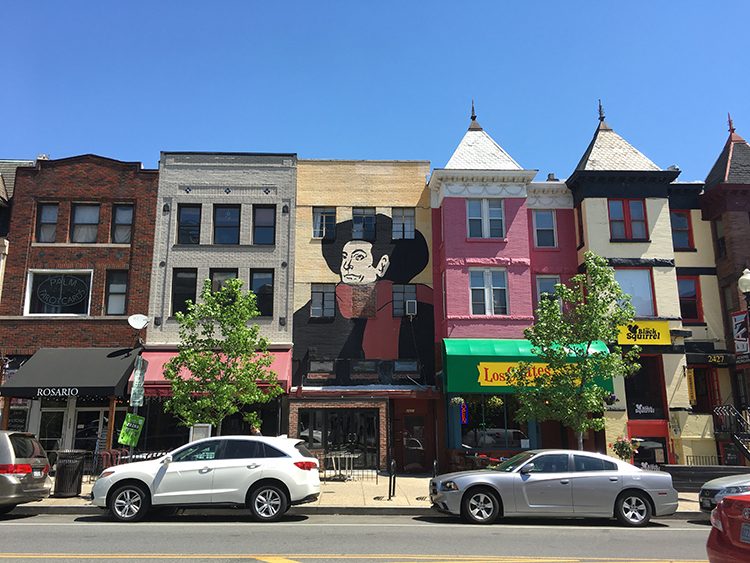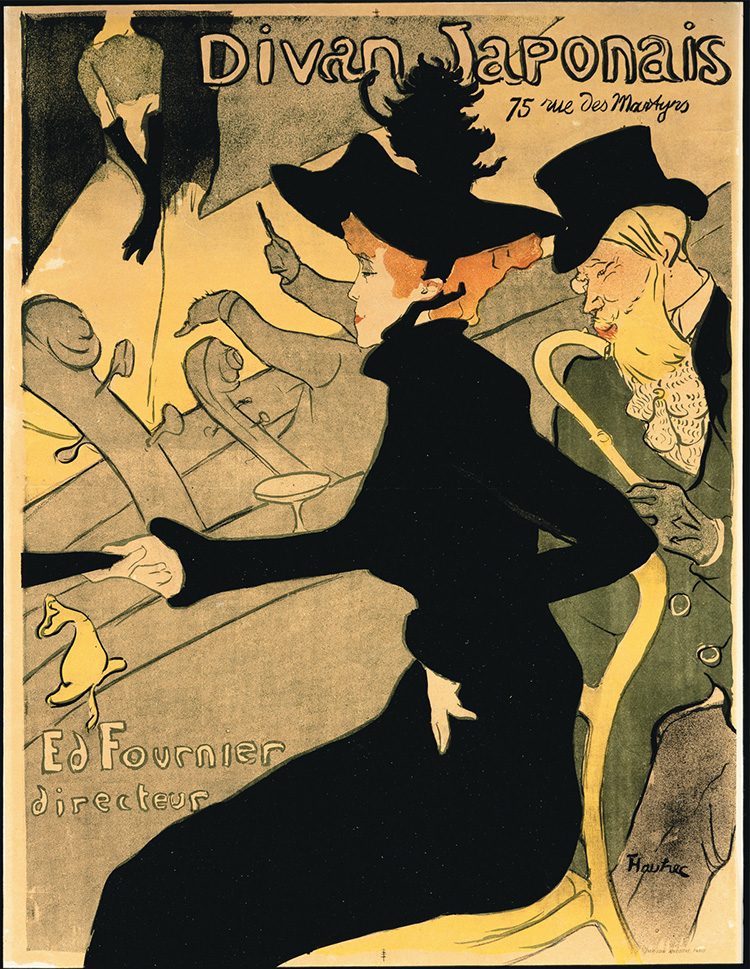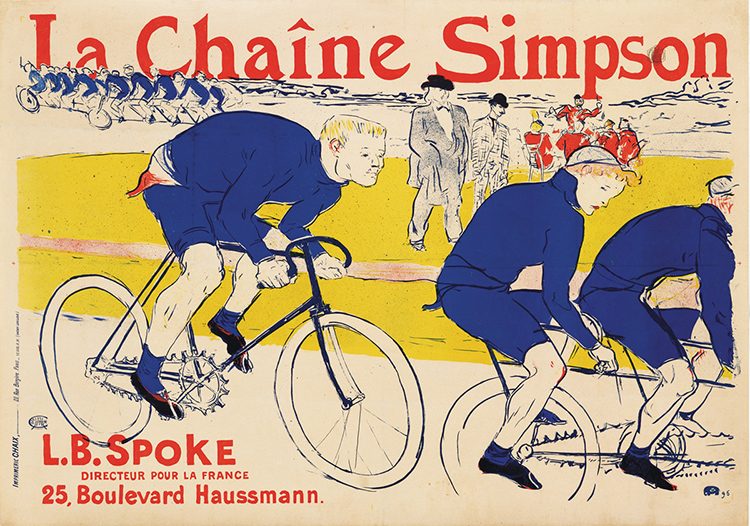
Toulouse-Lautrec inspired mural in Washington, DC’s Adams Morgan neighborhood. Photo: Britta Galanis
On the bustling sidewalks of 18th Street, NW, in DC’s Adams Morgan neighborhood, you might notice something familiar. A vibrant mural of one of Toulouse-Lautrec’s most famous posters of the singer Aristide Bruant has been residing in the area for over a decade. Starting off as Café Lautrec, the space is a 2,100 square foot storefront that was owned by André Neveux. The café’s name later changed to Café Toulouse. Neveux, who was the original owner of the space, painted the mural on the building. It has since closed, but the mural lives on.
We here at the Phillips can’t help but chuckle at the parallels between the proximity of Toulouse-Lautrec works and Tryst café. This Toulouse-Lautrec inspired mural is just a few storefronts down from the original Tryst café, and our current Toulouse-Lautrec exhibition is just a couple of floors up from Tryst at the Phillips.
Britta Galanis, Marketing & Communications Intern


